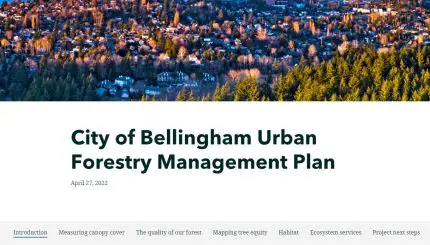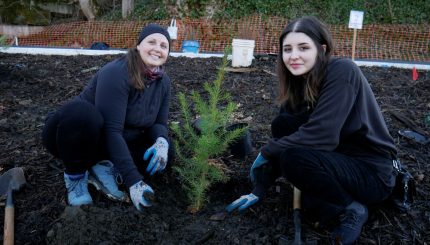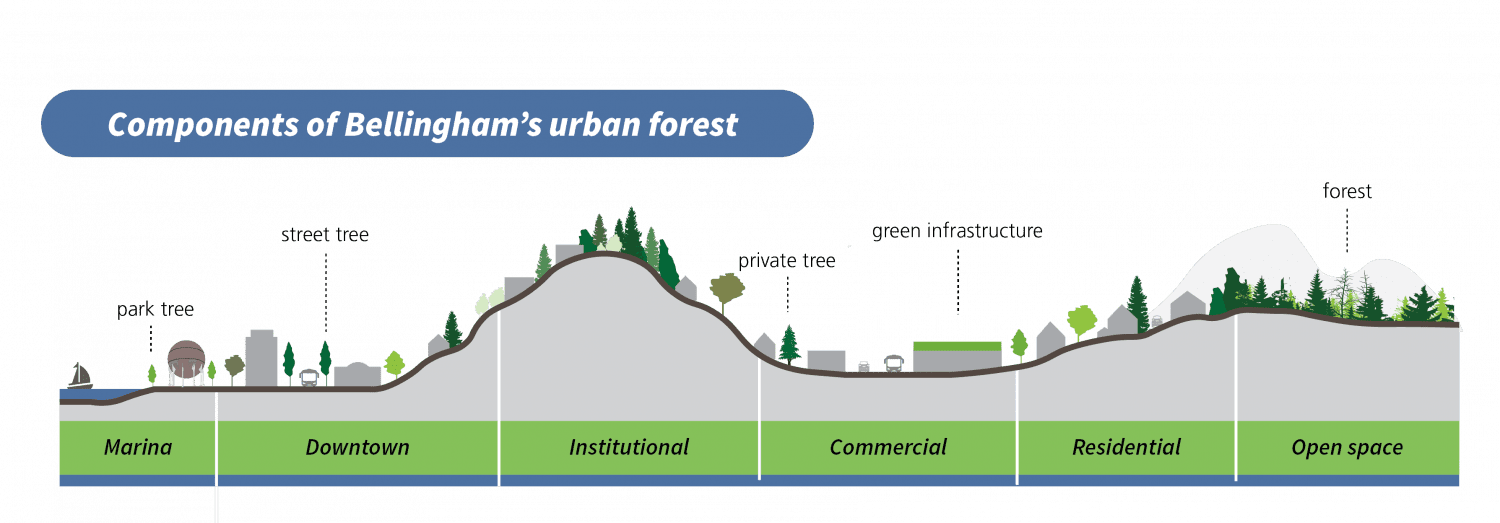The City of Bellingham is creating an Urban Forestry Management Plan (or Urban Forest Plan). The purpose of the Plan is to identify strategies that will help maintain a healthy and desirable urban forest through well-coordinated, consistent, efficient, and sustainable long-term urban forest management. See below to learn more about Bellingham’s urban forest.
Plan Status – Summer 2024
Phase 3 (Plan Development) is underway.
We worked with our consultants to summarize the valuable community input we received during the structured Phase 3 engagement period from April 15 to May 15 into a Phase 3 Engagement Summary Report. All the individual comments we received during this period are included in the Engagement Summary Appendices. The Engagement Summary Report was presented to City Council on Monday, June 17 during the Committee of the Whole.
Comments can still be submitted for consideration on our Engage Bellingham page or via email at umfp@cob.org. The project team will consider all comments, along with input from Council and staff, when finalizing the Plan. Thank you for your input!
More Information
Learn about Bellingham’s urban forest through the following resources.
Additional Information
Reports and Resources
- Phase 3 Engagement Summary Report, 2024
- Phase 3 Engagement Summary Appendices, 2024
- Draft Urban Forest Plan, April 2024
- Phase 2 Engagement Summary Report, 2022
- Phase 2 Engagement Summary Appendices, 2022
- Open House presentation for public input, May 2022
- Canopy and Forest Structure Analysis Summary Report, 2021 (updated Nov. 2022)
- Wildlife Corridor Analysis Report, 2021 (updated Nov. 2022)
- Wildland Urban Interface Report, 2021
- State of the Urban Forest Report, 2022
- Urban Forest Storymap, 2022
- Urban Forestry Management Plan Video, 2022
- FAQ About the Forest Structure and Wildlife Corridor Methodologies, 2022
Council Presentations
2024
- Urban Forest Plan – Phase 3 Engagement Update, 6/17/2024
- Urban Forest Plan – Phase 3, Draft Plan Council Presentation, 4/15/2024
- Community Tree Programs Council Presentation, 4/15/2024
2023
- Urban Forestry Management Plan Update, Council Presentation Slides 9/25/2023
- Urban Forestry Management Plan – Phase 3, Canopy Cover Target Recommendation 11/20/2023
2022
- Urban Forestry Management Plan Update, Council Presentation Slides 11/21/2022
- Tree Regulations & Enforcement, Council Presentation Slides 4/25/2022
2021
- Urban Forestry Management Plan Update, Council Presentation 1/25/2021
- Urban Forestry Management Plan Update, Council Presentation Slides 8/30/2021
- Urban Forestry Management Plan Update, Council Presentation Video 8/30/2021 – Item 4
Contacts
Analiese Burns
Habitat and Restoration Manager
Public Works Natural Resources
acburns@cob.org
(360) 778-7968






